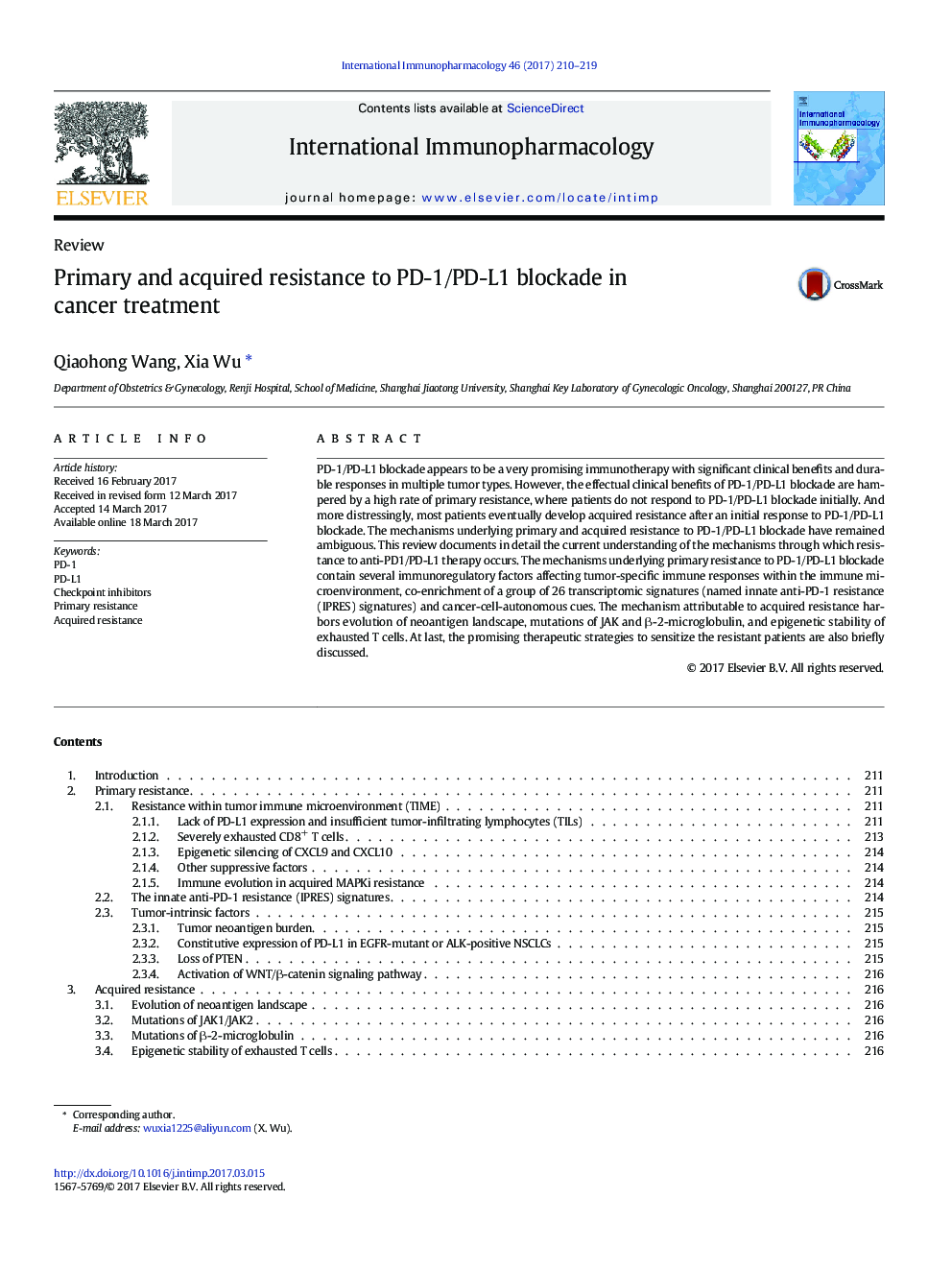| Article ID | Journal | Published Year | Pages | File Type |
|---|---|---|---|---|
| 5555582 | International Immunopharmacology | 2017 | 10 Pages |
â¢Clinical benefits of PD-1/PD-L1 blockade are hampered by primary resistance.â¢Most patients eventually develop acquired resistance after an initial response.â¢Evolution of neoantigen loss impairs the response to PD-1/PD-L1 blockade.â¢Mutations of JAK and β2M contribute to acquire resistance.â¢Epigenetic stability of exhausted T cells may participate in the acquired resistance.
PD-1/PD-L1 blockade appears to be a very promising immunotherapy with significant clinical benefits and durable responses in multiple tumor types. However, the effectual clinical benefits of PD-1/PD-L1 blockade are hampered by a high rate of primary resistance, where patients do not respond to PD-1/PD-L1 blockade initially. And more distressingly, most patients eventually develop acquired resistance after an initial response to PD-1/PD-L1 blockade. The mechanisms underlying primary and acquired resistance to PD-1/PD-L1 blockade have remained ambiguous. This review documents in detail the current understanding of the mechanisms through which resistance to anti-PD1/PD-L1 therapy occurs. The mechanisms underlying primary resistance to PD-1/PD-L1 blockade contain several immunoregulatory factors affecting tumor-specific immune responses within the immune microenvironment, co-enrichment of a group of 26 transcriptomic signatures (named innate anti-PD-1 resistance (IPRES) signatures) and cancer-cell-autonomous cues. The mechanism attributable to acquired resistance harbors evolution of neoantigen landscape, mutations of JAK and β-2-microglobulin, and epigenetic stability of exhausted T cells. At last, the promising therapeutic strategies to sensitize the resistant patients are also briefly discussed.
